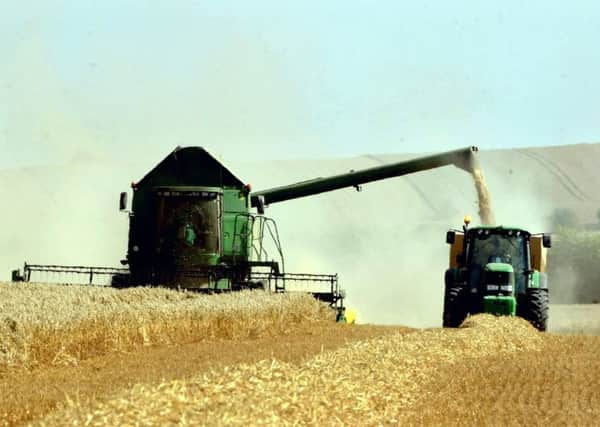Grain of hope for arable farm sector over Brexit future
This article contains affiliate links. We may earn a small commission on items purchased through this article, but that does not affect our editorial judgement.


That was the qualified prediction given at a series of meetings this week by Julian Bell, senior rural business consultant with SAC Consulting.
Speaking at the joint AHDB/SRUC agronomy roadshow this week, Bell said that the fall in the value of sterling had seen UK grain producers enjoy a boost in prices which ran counter to the wider global position.
Advertisement
Hide AdAdvertisement
Hide AdPredicting that domestic markets were likely to be tighter from 2017 onwards, he said that this, together with the weaker pound and EU support payments for the next few years, could offer farmers a window of opportunity to develop strategies which could help their businesses weather future volatility.
Looking to the greater uncertainty of the post-Brexit era, though, he warned that grain exports from the UK to the continent were likely to face tariffs. However, citing the example of feed wheat, he said that these could well be far lower than the punitive rates which could be faced by the lamb, beef and dairy sectors.
Bell said that tariff rate quotas (TRQ) which set quantities available at reduced or zero tariff could see a considerable proportion of the UK’s average exportable surplus of wheat traded with the EU at a low tariff rate of about €12 (£10) a tonne.
“And if we knock that off the price today of around £140 that would see a price of around £130 for in-quota trade which means, with a continued weak pound, the situation might be survivable for producers,” he said.
Bell added that any grain over and above this TRQ would see the tariff raised to €95 a tonne, reducing the price to a trade-blocking £55 a tonne.
However, he said that there would be huge volatility in the markets – and warned producers against building their entire business plan on the basis of the pound remaining at its current low values: “While the current uncertainty is a major factor in keeping the pound low, the situation in Europe itself could change, with a number of member states facing national elections which could create uncertainty there too.”
He also said that non-tariff barriers such as plant health issues, pesticide use regulations and the adoption of technologies such as genetic modification could also be invoked to further complicate matters.
Bell proposed that one tactic for producers seeking to reduce some of the volatility would be to target specific markets and build closer working relationships with end users, a move which would reduce the risk of exchange rate fluctuations and regulatory difficulties for both parties.
Advertisement
Hide AdAdvertisement
Hide AdAnother area ripe for investigation by the domestic arable sector was the production of protein crops – with the import bill for this animal feed additive currently standing at around £150 million a year.
“We might not be able to grow soya but there is a real domestic market for an alternative protein source,” said Bell.
